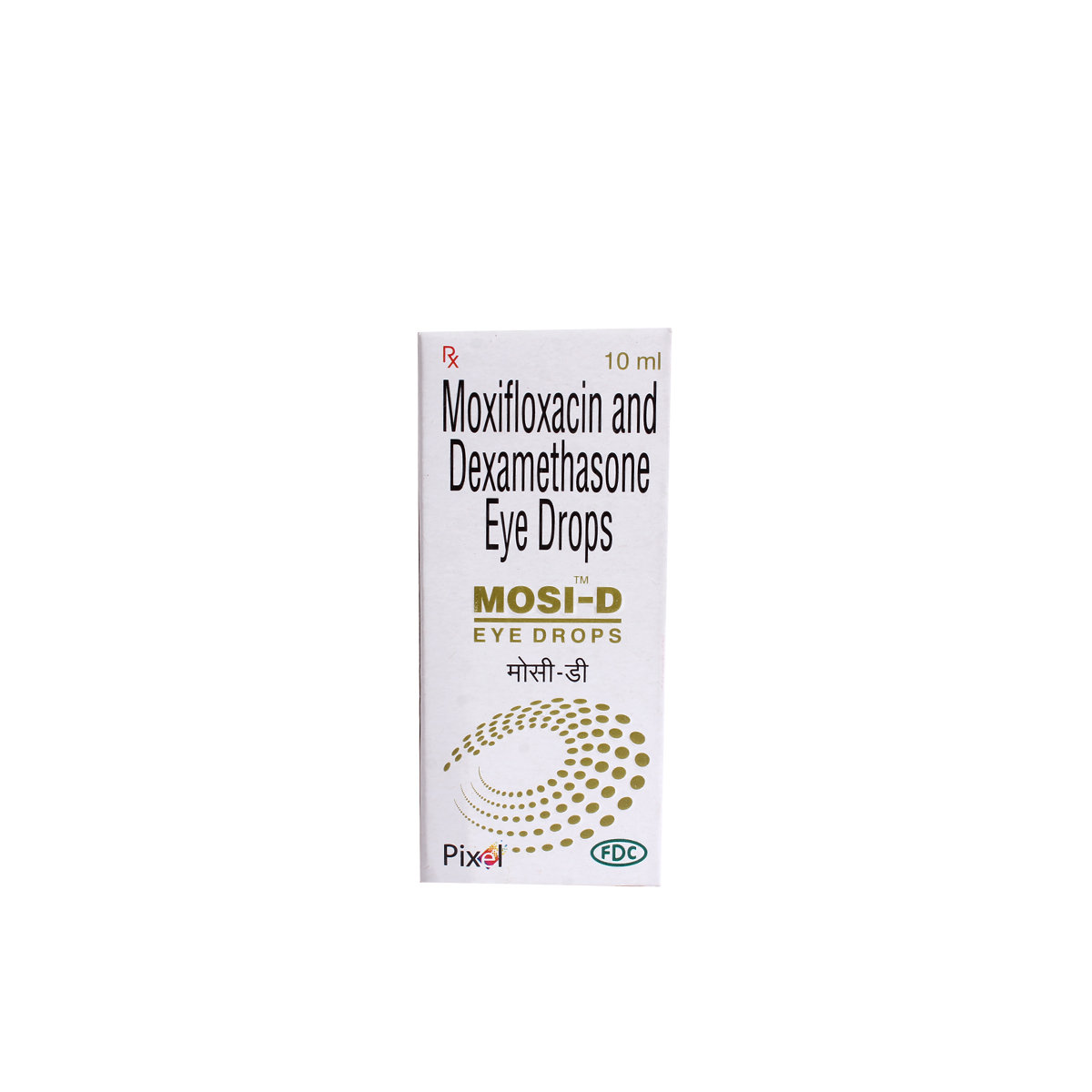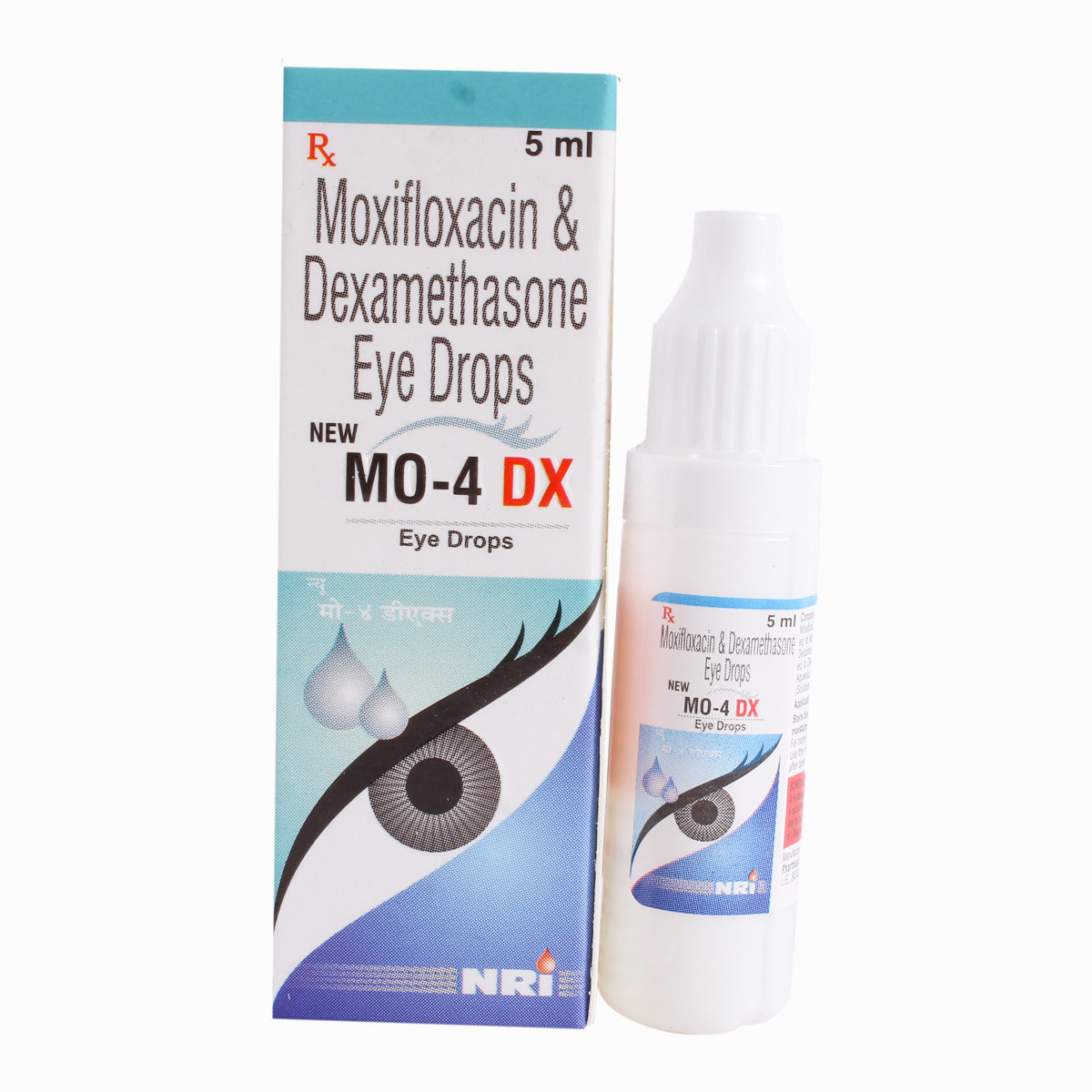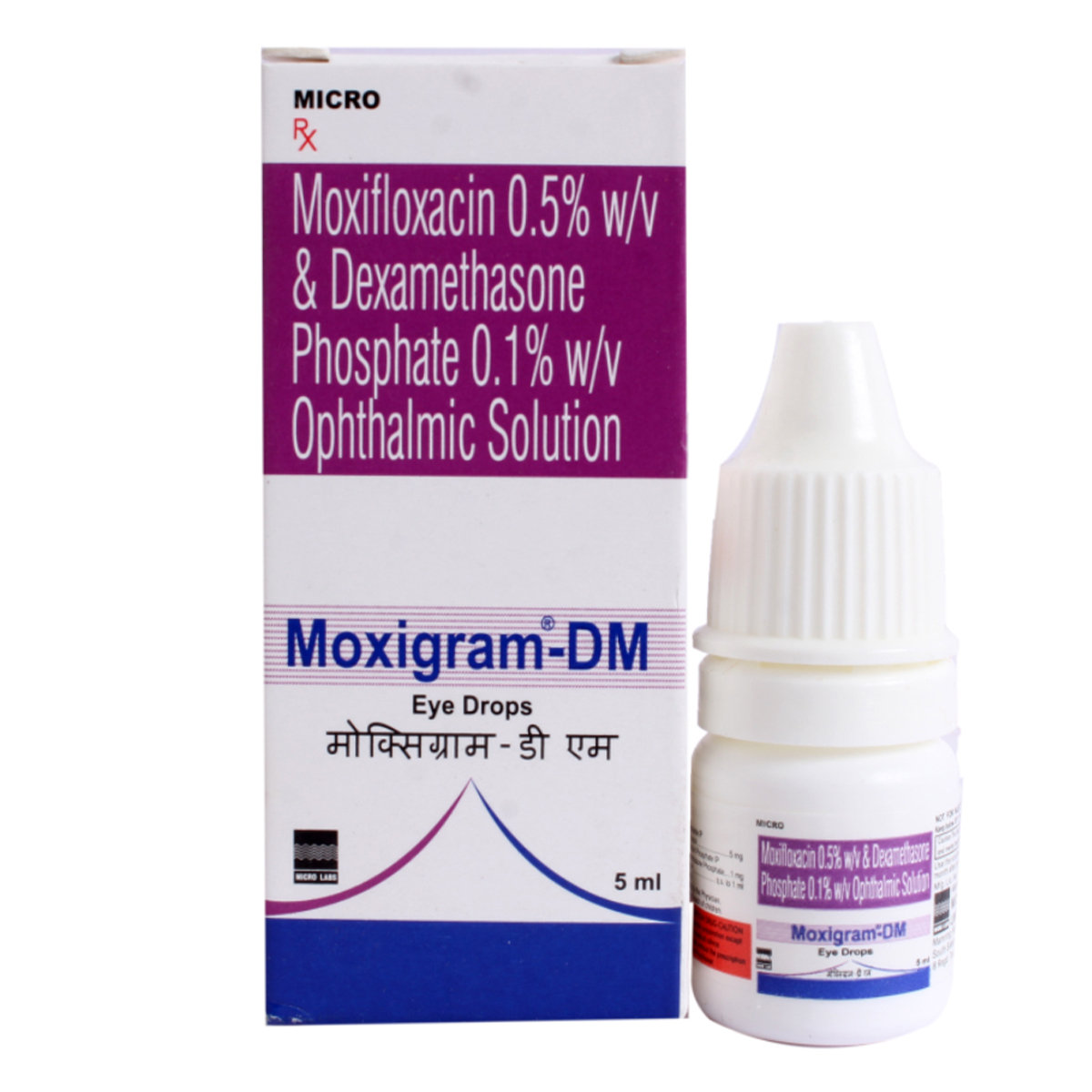4 Quin-D Eye Drops 5ml
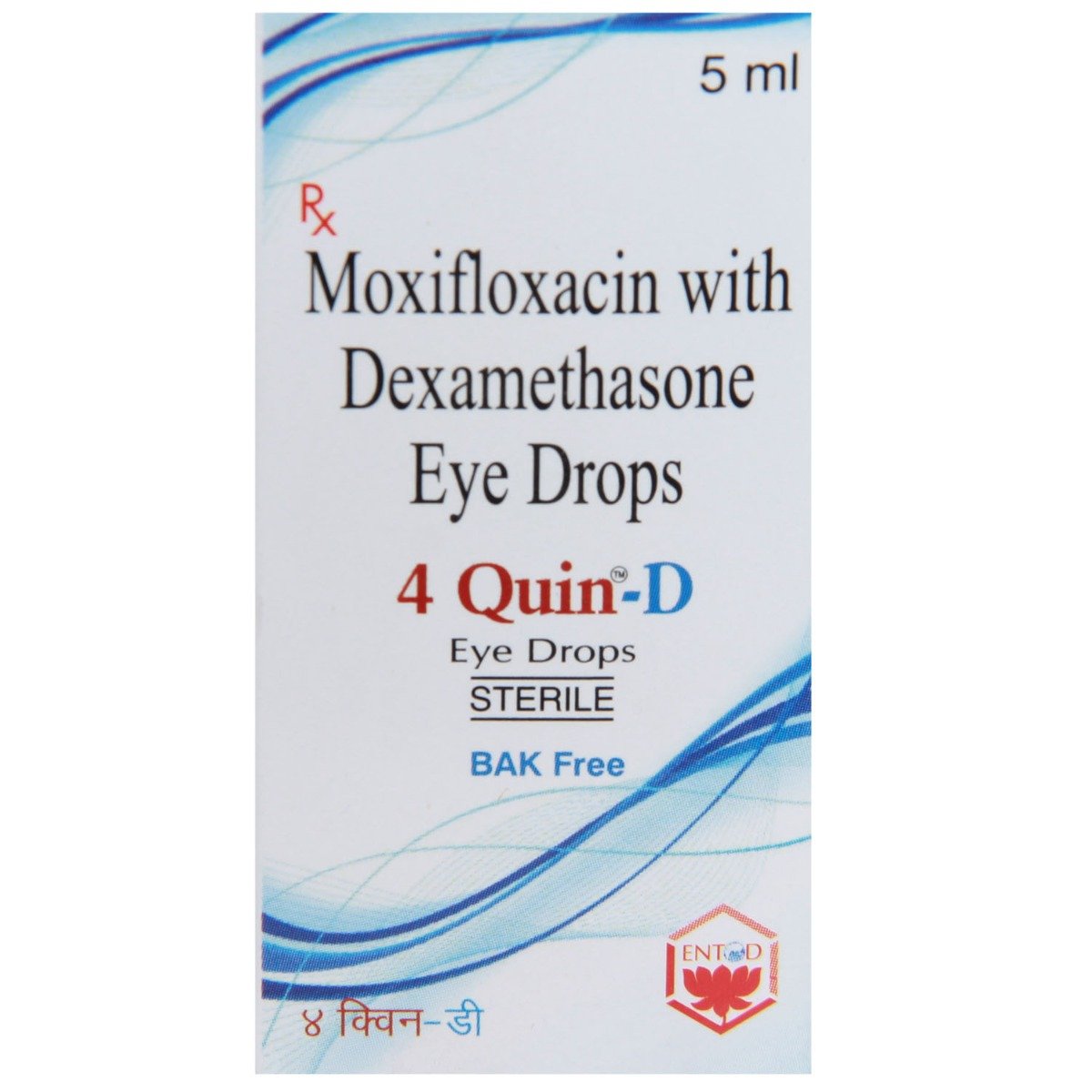
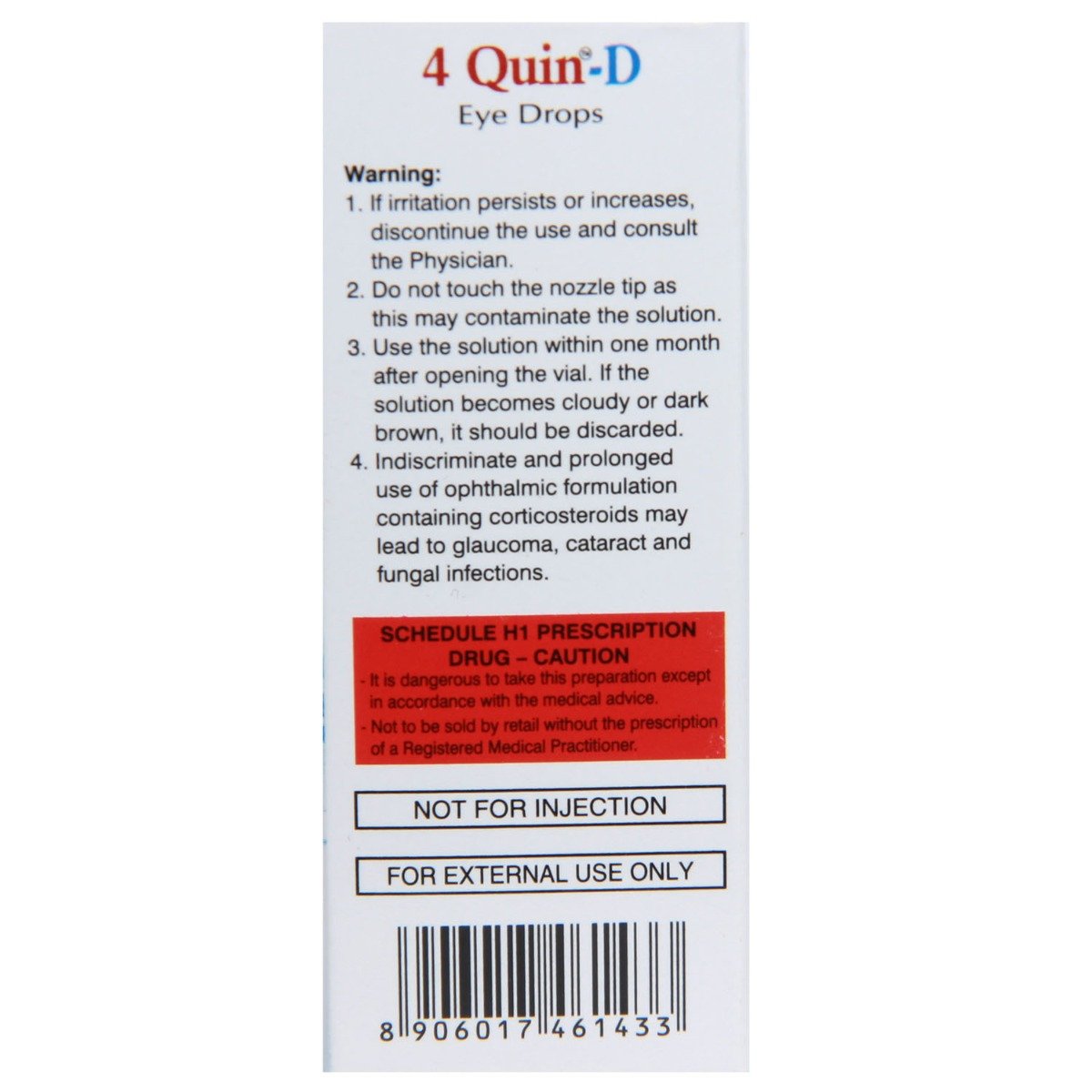
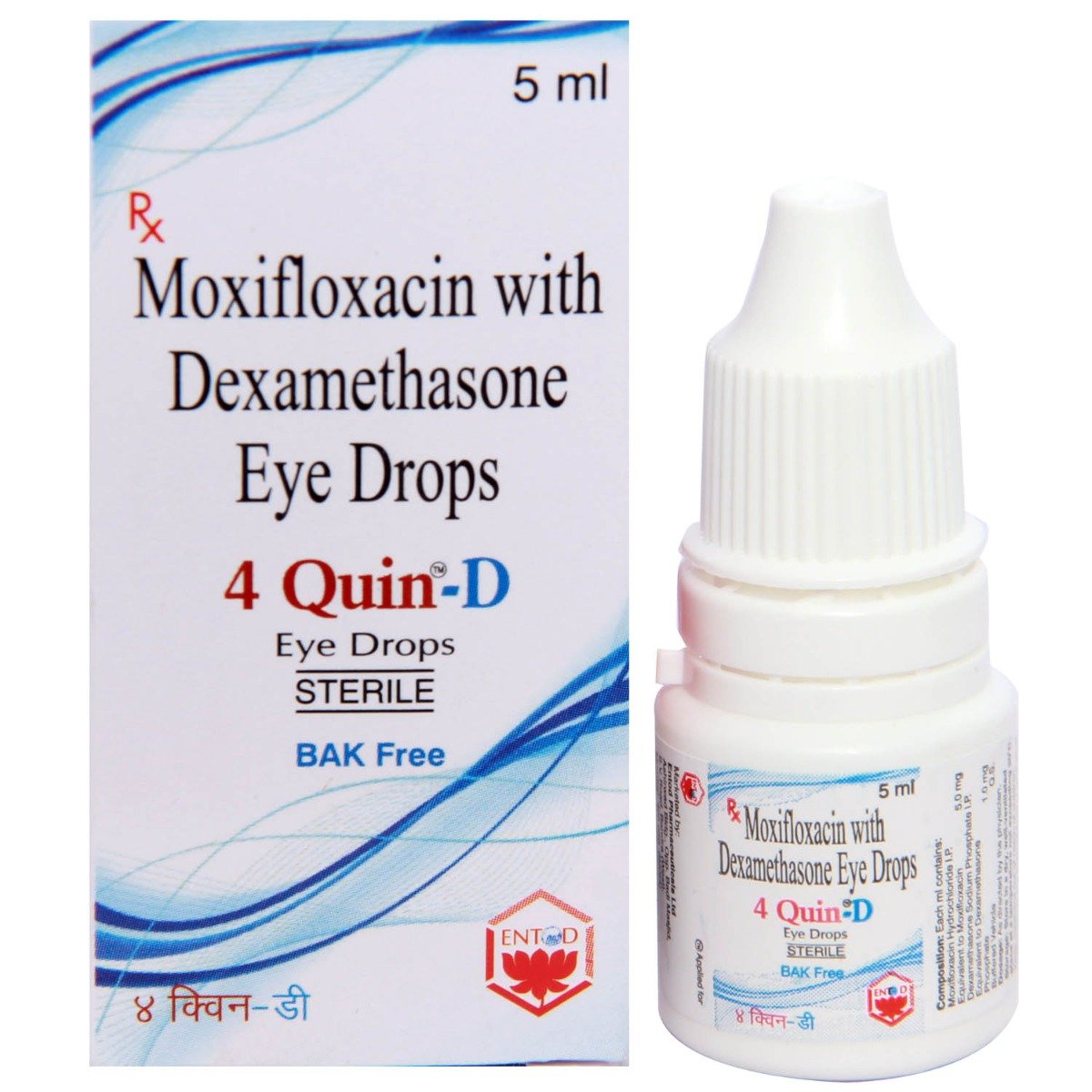
MRP ₹103
(Inclusive of all Taxes)
₹15.4 Cashback (15%)
know your delivery time
Provide Delivery Location
Composition :
Manufacturer/Marketer :
Consume Type :
Expires on or after :
Return Policy :

Secure Payment

Trusted by 8 Crore Indians

Genuine Products
Therapeutic Class
Country of origin
Manufacturer/Marketer address
Disclaimer
Alcohol
Safe if prescribed
It is advisable to avoid alcohol intake while using 4 Quin-D Eye Drops 5ml as it may affect your ability to fight infections.
Pregnancy
Consult your doctor
4 Quin-D Eye Drops 5ml is a category C medicine. 4 Quin-D Eye Drops 5ml may cause some side effects to the unborn baby or fetus, so it should not be used in pregnant women.
Breast Feeding
Consult your doctor
4 Quin-D Eye Drops 5ml should be used with caution in breastfeeding mothers.
Driving
Safe if prescribed
4 Quin-D Eye Drops 5ml may cause vision problems. However, it will be mild and temporary in nature. So, it is advisable to avoid driving until your vision clears.
Liver
Consult your doctor
4 Quin-D Eye Drops 5ml can be used for treating eye infections in patients with liver diseases.
Kidney
Consult your doctor
4 Quin-D Eye Drops 5ml can be used for treating eye infections in patients with kidney diseases.
Children
Safe if prescribed
4 Quin-D Eye Drops 5ml should be used with caution in children. It is not recommended for use in newborns.
Product Substitutes
About 4 Quin-D Eye Drops 5ml
4 Quin-D Eye Drops 5ml belongs to the class of ‘antibiotics’ used to treat inflammation associated with bacterial eye infections. It treats eye infections like conjunctivitis (infected conjunctiva) and other inflammatory conditions after eye surgery.
4 Quin-D Eye Drops 5ml is a combination of two medicines: Moxifloxacin (antibiotic) and Dexamethasone (steroid). Moxifloxacin is an antibiotic that stops bacteria from making a copy of their genetic material (DNA), thereby killing and stopping the growth of bacterial infection. Dexamethasone is a steroid that reduces inflammation and symptoms associated with infection such as redness and irritation by inhibiting the natural substance like prostaglandins that cause inflammation. Thus together 4 Quin-D Eye Drops 5ml prevents spread of redness, allergies, inflammation and bacterial infection in the eyes.
You should use this medicine as prescribed by your doctor. The common side-effects of 4 Quin-D Eye Drops 5ml are application site burning/stinging sensation or redness and temporary blurred vision. While using eye drops, if swelling or sensitivity to light occurs, wash your eyes thoroughly with cold water after 15 minutes. If the condition does not improve, consult your doctor immediately.
Do not use 4 Quin-D Eye Drops 5ml if you are allergic to Moxifloxacin, Dexamethasone, or any contents of it. Before taking 4 Quin-D Eye Drops 5ml, inform your doctor if you have fungal infections, viral infections such as viral infection of the conjunctiva or cornea of an eye, herpes simplex or varicella, or parasitic infections such as amoebiasis. Do not use 4 Quin-D Eye Drops 5ml if you have tuberculosis, damaged cornea, ulceration, lesions with incomplete formation of the covering tissue, and increased pressure inside the eye.
Uses of 4 Quin-D Eye Drops 5ml
Medicinal Benefits Mweb
Key Benefits
4 Quin-D Eye Drops 5ml is a combination of two medicines: Moxifloxacin and Dexamethasone. Moxifloxacin is a fluoroquinolone antibiotic that acts by interfering with the formation of essential proteins required for bacterial growth. Dexamethasone is a steroid medicine that has anti-inflammatory properties and acts by inhibiting the chemicals such as prostaglandins that cause inflammation. It also reduces symptoms associated with infection such as redness and irritation.
Directions for Use
Side Effects of 4 Quin-D Eye Drops 5ml
- Stinging or burning sensation
- Redness
- Blurred vision
- Swelling
- Watery eyes
Drug Warnings
Before taking 4 Quin-D Eye Drops 5ml, inform your doctor if you have vision problems, severe pain in the eye, glaucoma (raised pressure in the eye), eye injury or eye surgery, or using any other eye drops or eye ointment. Inform your doctor immediately if you notice swelling or weight gain around the trunk or in the face, as it may be a sign of Cushing’s syndrome (high levels of cortisol in the body). Do not use eye drops for longer than recommended by your doctor as it may suppress adrenal gland function and may increase the risk of cataracts (clouding of the eye). 4 Quin-D Eye Drops 5ml should be not be used in the skin conditions like herpes simplex virus infection, or other viral eye infections.
Drug-Drug Interactions
Drug-Drug Interactions
Login/Sign Up
Co-administration of Desmopressin with 4 Quin-D Eye Drops 5ml may increase the risk of hyponatremia (low levels of salt in the blood).
How to manage the interaction:
Co-administration of 4 Quin-D Eye Drops 5ml and Desmopressin can lead to an interaction, it can be taken if advised by a doctor. However, if you experience any symptoms like confusion, hallucination, seizure, changes in blood pressure, increased heart rate, fever, excessive sweating, shivering or shaking, blurred vision, muscle stiffness, tremors, stomach cramps, nausea, vomiting, and diarrhea, consult a doctor immediately. Do not stop using any medications without a doctor's advice.
When 4 Quin-D Eye Drops 5ml is taken with Ranolazine, may significantly reduce the blood levels of Ranolazine.
How to manage the interaction:
Co-administration of Ranolazine and 4 Quin-D Eye Drops 5ml can lead to an interaction, it can be taken if advised by a doctor. Do not stop using any medications without a doctor's advice.
When Regorafenib is taken with 4 Quin-D Eye Drops 5ml, may significantly reduce the blood levels of Regorafenib.
How to manage the interaction:
Co-administration of Regorafenib and 4 Quin-D Eye Drops 5ml can lead to an interaction, it can be taken if advised by a doctor. Do not stop using any medications without a doctor's advice.
When Rilpivirine is taken with 4 Quin-D Eye Drops 5ml, may significantly reduce the blood levels of Rilpivirine.
How to manage the interaction:
Co-administration of Rilpivirine and 4 Quin-D Eye Drops 5ml can lead to an interaction, it can be taken if advised by a doctor. Do not stop using any medications without a doctor's advice.
Using 4 Quin-D Eye Drops 5ml with Ziprasidone can increase the risk of irregular heart rhythm.
How to manage the interaction:
Taking 4 Quin-D Eye Drops 5ml with Ziprasidone is not recommended as it can lead to an interaction; it can be taken together if prescribed by a doctor. However, consult your doctor if you experience sudden dizziness, lightheadedness, fainting, shortness of breath. Do not discontinue any medications without consulting a doctor.
Taking Amiodarone and 4 Quin-D Eye Drops 5ml may significantly raise the risk of an abnormal heart rhythm.
How to manage the interaction:
Taking Amiodarone and 4 Quin-D Eye Drops 5ml is not recommended as it can lead to an interaction; it can be taken if advised by a doctor. If you get dizziness, or fast or racing heartbeats, consult a doctor. Do not stop taking any medications without visiting a doctor.
Using quinidine together with 4 Quin-D Eye Drops 5ml can increase the risk of an irregular heart rhythm.
How to manage the interaction:
Taking 4 Quin-D Eye Drops 5ml with Quinidine can cause an interaction, consult a doctor before taking it. You should seek immediate medical attention if you develop sudden dizziness, lightheadedness, fainting, or fast or pounding heartbeats. Do not stop using any medications without talking to a doctor.
Using procainamide together with 4 Quin-D Eye Drops 5ml can increase the risk of an irregular heart rhythm.
How to manage the interaction:
Taking 4 Quin-D Eye Drops 5ml with Procainamide can cause an interaction, consult a doctor before taking it. You should seek immediate medical attention if you develop sudden dizziness, lightheadedness, fainting, or fast or pounding heartbeats. Do not stop using any medications without talking to a doctor.
Using Halofantrine together with 4 Quin-D Eye Drops 5ml can increase the risk of an irregular heart rhythm.
How to manage the interaction:
Taking 4 Quin-D Eye Drops 5ml with Halofantrine is not recommended as it can lead to an interaction; it can be taken if advised by your doctor. You should seek immediate medical attention if you develop sudden dizziness, lightheadedness, fainting, shortness of breath, or heart palpitations.
Using dronedarone together with 4 Quin-D Eye Drops 5ml can increase the risk of an irregular heart rhythm.
How to manage the interaction:
Taking 4 Quin-D Eye Drops 5ml with Dronedarone is not recommended as it can lead to an interaction; it can be taken if advised by your doctor. You should seek immediate medical attention if you develop sudden dizziness, lightheadedness, fainting, shortness of breath, or heart palpitations.
Drug-Food Interactions
Drug-Food Interactions
Login/Sign Up
Drug-Diseases Interactions
Drug-Diseases Interactions
Login/Sign Up
Drug-Drug Interactions Checker List
- RITONAVIR
- COBICISTAT
Habit Forming
Diet & Lifestyle Advise
- Sleep for at least six to eight hours to rejuvenate your eyes naturally.
- Wash your eyes with clean water at least two to three times a day. Do not wash your eyes if you have undergone any eye surgery for at least 2 weeks.
- Manage stress, eat healthily, drink plenty of water, exercise regularly, and get plenty of sleep.
- Avoid alcoholic beverages as it can make you dehydrated and affect your sleep. This effect can also affect your body’s ability to fight off infections.
All Substitutes & Brand Comparisons
RX
Not for online saleMosi-D Eye Drop 10 ml
FDC Ltd
₹33.5
(₹3.02/ 1ml)
83% CHEAPERRX
Not for online saleMosi-D Eye Drops 5 ml
FDC Ltd
₹33.5
(₹6.04/ 1ml)
67% CHEAPERRX
Not for online saleOccucom Eye Drops 10 ml
Sunways (India) Pvt Ltd
₹122.5
(₹11.03/ 1ml)
40% CHEAPER

Have a query?
Buy best Ocular products by
Entod Pharmaceuticals Ltd
Ajanta Pharma Ltd
Sunways (India) Pvt Ltd
Sun Pharmaceutical Industries Ltd
Cipla Ltd
Micro Labs Ltd
Allergan Healthcare India Pvt Ltd
Intas Pharmaceuticals Ltd
Raymed Pharmaceuticals Ltd
Nri Vision Care India Ltd
FDC Ltd
Jawa Pharmaceuticals India Pvt Ltd
Indoco Remedies Ltd
Sapient Laboratories Pvt Ltd
Senses Pharmaceuticals Pvt Ltd
Centaur Pharmaceuticals Pvt Ltd
Neomedix Healthcare India Pvt Ltd
Aromed Pharmaceuticals
Optho Remedies Pvt Ltd
Aurolab
Austrak Pvt Ltd
Lupin Ltd
Mankind Pharma Pvt Ltd
Zivira Labs Pvt Ltd
Optho Pharma Pvt Ltd
Synovia Life Sciences Pvt Ltd
Akumentis Healthcare Ltd
Eyekare
His Eyeness Ophthalmics Pvt Ltd
Protech Remedies Pvt Ltd
Runyon Pharmaceutical Pvt Ltd
Alcon Laboratories Inc
Syntho Pharmaceuticals Pvt Ltd
Alembic Pharmaceuticals Ltd
Bell Pharma Pvt Ltd
Klar Sehen Pvt Ltd
Sentiss Pharma Pvt Ltd
Irx Pharmaceuticals Pvt Ltd
Optho Life Sciences Pvt Ltd
Phoenix Remedies Pvt Ltd
Alkem Laboratories Ltd
Doctor Wonder Pvt Ltd
Hicare Pharma
Ipca Laboratories Ltd
Neon Laboratories Ltd
Okulus Drugs India
Pharmtak Ophthalmics (I) Pvt Ltd
Berry & Herbs Pharma Pvt Ltd
Glow Vision Pharmaceuticals
Kaizen Drugs Pvt Ltd
Choroid Laboratories Pvt Ltd
Indiana Opthalamics Pvt Ltd
Optica Pharmaceutical Pvt Ltd
Pharmatak Opthalmics India Pvt Ltd
Samarth Life Sciences Pvt Ltd
Vibgyor Vision Care
Mofon Drugs
Novartis India Ltd
Pharmia Biogenesis Pvt Ltd
Zydus Cadila
Appasamy Ocular Devices Pvt Ltd
Leeford Healthcare Ltd
Medivision Pharma Pvt Ltd
Orbit Life Science Pvt Ltd
X-Med Royal Pharma Pvt Ltd
Zee Laboratories Ltd
Aarma Laboratories
Guerison MS Inc
Laborate Pharmaceuticals India Ltd
Xtas Pharmaceuticals
Accurex Biomedical Pvt Ltd
Blucrab Pharma Pvt Ltd
Does Health Systems Pvt Ltd
Flagship Biotech International Pvt Ltd
Lavue Pharmaceuticals Pvt Ltd
Nutrilis Healthcare Pvt Ltd
Ursa Pharm India Pvt Ltd
Vee Remedies
Vyonics Health Care India Pvt Ltd
Warren Pharmaceuticals Pvt Ltd
Abbott India Ltd
Accvus Pharmaceuticals
Akums Drugs & Pharmaceuticals Ltd
Cadila Healthcare Ltd
Carevision Pharmaceuticals Pvt Ltd
Dey's Medical Stores (Mfg) Ltd
East West Pharma India Pvt Ltd
Eyedea Pharmaceuticals Pvt Ltd
Nimbus Healthcare Pvt Ltd
Ocuris Pharmaceuticals Pvt Ltd
Sherings Pharmaceuticals
Tarks Pharmaceuticals Pvt Ltd
Vcan Biotech
Vision Medilink
Aice Health Care Pvt Ltd
Appasamy Pharmaceuticals Pvt Ltd
Asperia Lifescience Pvt Ltd
Beatum Healthcare Pvt Ltd
East India Pharmaceutical Works Ltd
Grevis Pharmaceutical Pvt Ltd

